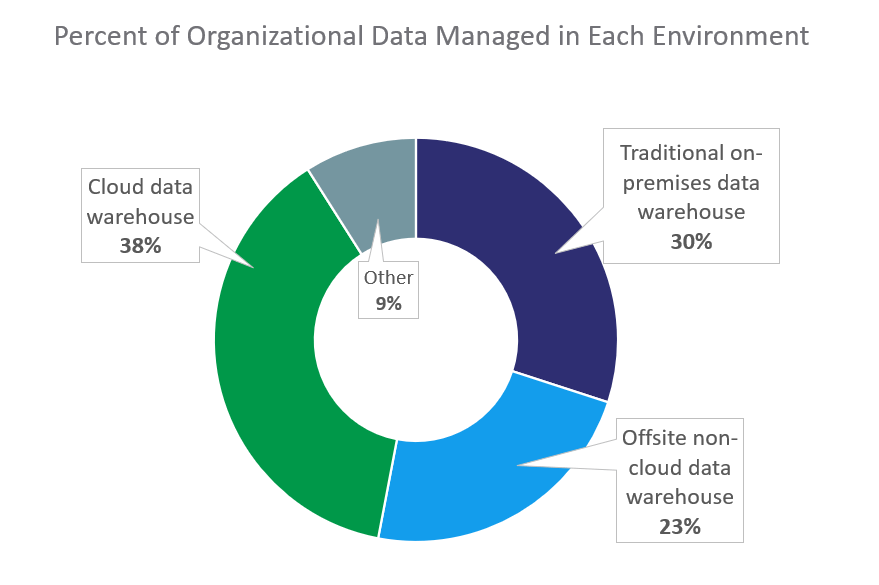9 Best Practices For Building a Data Warehouse

Introduction
A Data Warehouse is a structure that contains the detailed information needed to support business decisions. It’s typically used by groups such as sales, marketing, and finance departments. Data Warehouses usually contain large amounts of structured data (data organized in rows and columns) from multiple sources, such as databases or other applications used by an organization. These Data Warehouse practices described here will help you avoid common mistakes as you build your data warehouse.
What is a Data Warehouse?
A Data Warehouse is a centralized repository where all your company’s raw business data is stored. Data Warehouses are used for analyzing large amounts of information to make decisions and improve processes, and they’re often used by organizations with multiple departments or locations.
A data mart is a smaller version of a big-picture database that allows you to focus on specific areas within your organization, like marketing or sales. A data mart can be created from an existing warehouse or built from scratch; it’s essentially an isolated subset of the larger warehouse that focuses on one specific area (like customer profiles).
Statistics of Data Warehouse
- The Data Warehouse industry is expected to grow by 5.26% over the next five years, reaching a value of $19.1 billion in 2022.
- The Data Warehouse market includes hardware and software used to store and manage large amounts of information. This data can be used to make decisions about how an organization operates or responds to changes in the environment around it.
- Data Warehouses have become increasingly important in recent years because they allow organizations to use their historical data in new ways, such as for predictive analytics or for building machine learning models.


Best Practices For Building a Data Warehouse
It’s no secret that the data warehouse is a key part of any organization’s infrastructure. But how do you know if your data warehouse is set up right? Here are some best practices for building a data warehouse.
1. Know Your Data
Before you start building, make sure you know what kinds of information you’ll need to store and how much space it will take up. This will help you ensure you have enough storage for your organization’s needs.
2. Map Data To Business Processes
Once you’ve got a good idea of what kind of data to look for, start mapping it out about business processes: where does it come from? How does it get used? Where does it go after that? This will help you make sure your data warehouse is as efficient as possible.
3. Figure Out the Right Storage Methods
It will work best with your needs, for example, if you need fast access to large amounts of information from people who aren’t experts in database management systems (DBMS), then maybe an SQL server would work better than something like Hadoop.
4. Ensure Your Data Warehouse Is Relevant
This might seem obvious, but it’s important to remember that a data warehouse is only as valuable as the insights you take from it. For your data warehouse to be useful, it needs to be relevant to the needs of your company and those needs are going to change over time.
That’s why you must always look at your analytics and identify any areas where they could be improved or otherwise optimized based on what’s happening in your industry right now.

5. Ensure A Difference Between The Data and The Analytics
A lot of companies have trouble with this because they don’t realize how important it is for their analysis team to have access to all of their raw data at once so they can perform their analysis without having any gaps in their information sets.
This means that if someone wants to analyze customer satisfaction ratings across different age groups, they need access not only to all of their customer satisfaction surveys but also all of their demographic databases so they can compare those two things together effectively.
6. Have The Right People on Board
You’ll need to hire someone who knows how to build a data warehouse, but doesn’t get too technical—this person will be working with your team and should be able to communicate with them easily. You also need someone who understands the company’s goals and can work with them accordingly.
7. Don’t Store Sensitive Data in Your Database Without Encryption
If someone gets access to it, they could use it against your company! Instead, encrypt all sensitive data before storing it in the database so that if someone does steal it, they won’t be able to understand what they’ve stolen until they decrypt it themselves (which will take time).
8. Define The Tools You Want To Create The Data Warehouse
Now that you’ve identified your data, it’s time to decide what tools you will use to create your data warehouse. There are many options available and you should be sure to choose the ones that are best suited to your needs.
Choose tools that are easy to use and maintain, but not so simple that they can’t scale as your business grows. Avoid overly expensive or poorly documented tools (you’ll have enough trouble keeping up with the documentation as it is). You also need to be aware of how much time it will take for a new hire to learn these new tools – don’t choose anything too complicated!

9. Build Relationships Between Fact Tables & Dimension Tables
Build relationships between fact tables and dimension tables by implementing star schemas or snowflake schemas that meet your business requirements in terms of performance and usability (e.g., if you have too many dimensions or facts in your data warehouse).
Types of Data Warehouse
There are different types of data warehouses, each with its strengths and weaknesses.
1. Unstructured Data Warehouse
This type of data warehouse focuses on unstructured data, which is often found in social media posts and other online interactions. It’s great for gathering information about your customers’ needs and behaviours, but it can be difficult to analyze because it’s not organized in a way that makes sense to humans.
2. Semi-Structured Data Warehouse
This type of data warehouse focuses on semi-structured data, typically found in database systems like MySQL or Oracle. This is a good choice if you have structured data but also need access to unstructured content like emails or text messages. However, it can be difficult to analyze because there’s no clear connection between the different types of data points in your system.
3. Structured Data Warehouse
This type of data warehouse focuses on structured data (information that’s been organized into rows and columns). It’s best for companies who already have a lot of structured information that they want to use for reporting purposes; however, this kind of warehouse can be expensive and time-consuming compared with other options.
4. Hybrid Warehouse
These combine fact and dimension warehouses into one system so they can be used together for both historical and real-time analysis purposes; they’re often found in financial institutions where there’s a need to manage both historical transactions as well as current ones at the same time (examples include mortgages).

Future of Data Warehousing for Businesses
The data warehouse industry has been growing steadily for the past decade and is projected to continue growing at an annual rate of 14% through 2022. That’s good news for businesses that need comprehensive analytics to make informed decisions about their operations.
But it’s not just the size of the market that’s making it attractive it’s also how quickly new technologies are being adopted in this space. Let’s take a look at some of these emerging trends.
AI/ML: Artificial intelligence and machine learning are two technologies that are now being used in data warehousing to automate processes such as data cleansing, cleansing metadata, and prediction analysis. This can help companies save time and money by automating manual tasks, while still providing accurate results.
Cloud: Cloud computing is making its way into every industry, including data warehousing. Cloud-based solutions allow users to access their data from anywhere using any device with an internet connection this means no more having to install software on your computer or buy expensive hardware like servers! Cloud providers offer a wide range of options including Microsoft Azure, Google Cloud Platform (GCP), and Amazon Web Services (AWS).
To Conclude
The key to building a Data Warehouse is to start collecting, organizing and storing the data you need as early as possible. This will allow you to develop an efficient process for gathering the data and ensure it is available when needed by other systems in your organization.
FAQs on Data Warehouse Best Practices
A data warehouse is an ideal solution for companies that have large amounts of complex data that are not being utilized effectively. If your company’s BI- business intelligence team has been struggling to make sense of the data they have at its disposal, it could be time to consider building a data warehouse.
A Database is organized by use case, while a data warehouse is organized by subject matter. It is used to store data about customers and sales, but it wouldn’t include any financial information or market research. A Data Warehouse would include all of these things, as well as any other relevant information like legal documents or contracts related to those subjects.
The length of time required will depend on many factors including the size and complexity of your business problem, as well as how much time you can dedicate to building it. The best way to determine how long it will take you is by doing some preliminary research into what makes up a successful data warehouse project in your industry, then estimating how many hours per week you’ll be able to devote to its development.
A Data Warehouse is a database that stores historical business data for long-term use. Data warehouses are designed to manage large collections of data, and they’re often used for reporting purposes.
Data warehouses are essential for any company that wants to make better decisions based on accurate information. They allow you to put together reports on anything from sales figures over time to customer attrition rates or any other metric you want to look at to learn more about what’s happening with your business. A good warehouse will also help you identify trends in your industry over time, which can be very useful for planning future strategies and initiatives.
A well-designed Data Warehouse allows you to analyze your business’s current performance and make predictions about future trends based on historical trends. It also makes it easier for people within your organization to access the information they need at any given time, which makes them more productive and improves decision-making throughout the company.
The first step is to create a definition of what you want to accomplish by using a data warehouse. Once you know what you want to achieve, it will be easier to decide which tools will help you achieve it. You can then start collecting the data you need and setting up a schedule for regular updates.





